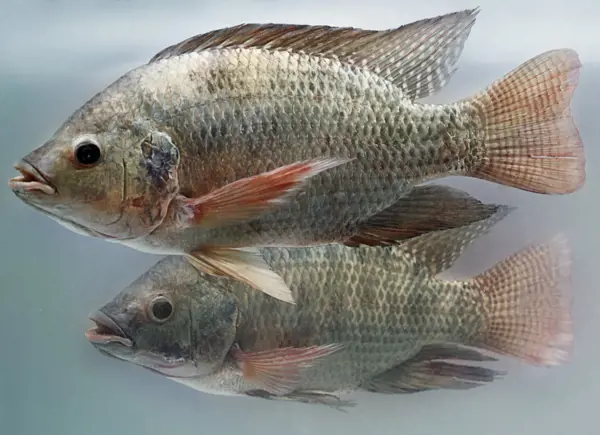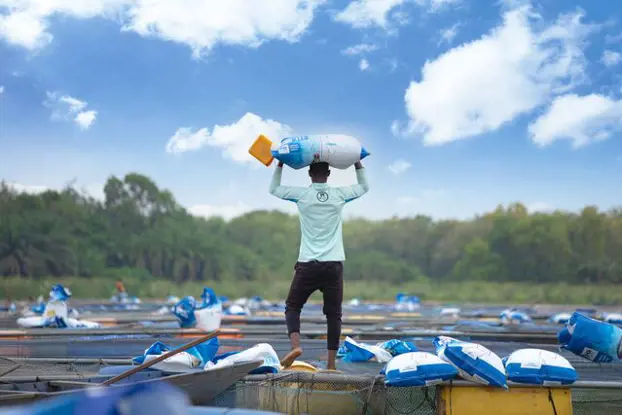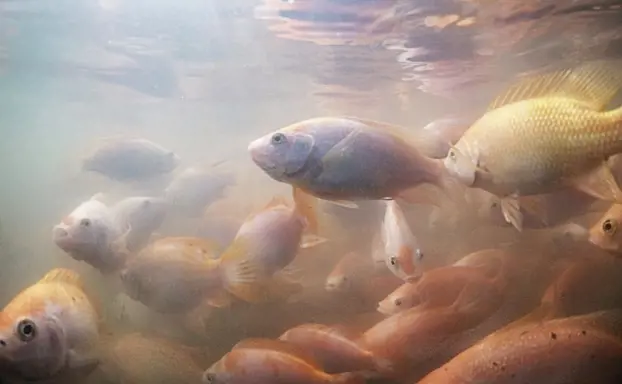 Tilapia
Tilapia
Tilapia is a herbivorous fish which is grown all over the world. The combination of physiological characteristics, with multiple production methods and conditions, requires for the feed assortment to be adapted accordingly. Being present in many markets, generates a lot of know how that is applied to producing the best feed for Tilapia farmers all over the world.
Research driven feed

Full feed assortment for every farm
When fish are reared in ponds, cages, or any other aquaculture production system, they all require a feed assortment that is adapted to the various systems to ensure good growth and healthy fish. Feed assortments not only take into account healthy growth, but also water quality and other parameters which have direct effects on production performance. Natural feed in ponds, buffering capacity in cages, and continuously circulating RAS systems are important factors when formulating an assortment.

Optimal growth in every stage
A dedicated R&D team is continuously studying how nutrients best support the development of fast and robust growing tilapia under different conditions. Feed composition, feeding regimes, and feed production methods are tested and evaluated. Local teams and R&D are in constant communication transferring information such as achievements or challenges faced by tilapia producers. This provides essential information to ensure the research knowledge is shared effectively with the market.

FREQUENTLY ASKED QUESTIONS
We have the answers to your questions
When your feed contains too much soybean meal your fish can develop an inflammatory response and irritation in the intestine, which results in reduced growth performance. Check with your Koudijs specialist what the recommended maximum levels are for your species. Also at Koudijs we have solutions in the form of highly digestible protein products to ensure maximum growth and health of your fish.
As the density of your production area increases so should the number of feeding points grow. Why? Movement triggers fish feeding behaviour. In a large production area with one feeding point many fish will be too late in reaching this feeding point. All the feed will be eaten by a small percentage of fish.
More feeding points means fish have equal opportunity to eat over entire production area. This improves growth homogeneity and your fish will all be of the right size at harvesting time.
Overfeeding leads to feed waste, which costs money and pollutes water. Polluted water leads to algal blooms, ammonia build up and low oxygen in the mornings. These are all bad for your fish!
Accurate feeding amounts can be achieved through regular sampling of fish weight and using this weight to calculate from feeding charts the correct amount of feed to be given daily. Also an experienced technician can see from the fish feeding behaviour if fish are hungry of not.
Keeping track of basic information of your farms production will improve your farm performance.
Regular sampling of your fish will allow you to keep track of the average fish size in your pond. With fish size you can calculate Weight Gain, Growth Rates, Average Daily Gain (ADG), Feed Conversion Ratios (FCR), etc. and evaluate progress and compare results.
Knowing the actual weight of your fish during the production cycle is important to calculate feeding rations, correct size of feed pellets and the number of times your fish need to be fed per day.
Keeping track of basic information of your farms production will improve your farm performance.
For example different water parameters can influence fish in many ways such as temperature on metabolic rates, dissolved oxygen on fish activity, pH on fish stress, algae on pH and dissolved oxygen, and ammonia on fish health. Daily checks of water parameters will help to determine the amount of feed required more accurately and let you know the condition of you fish.

